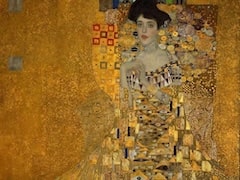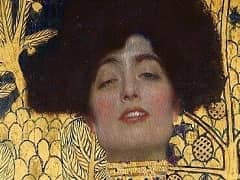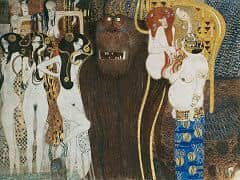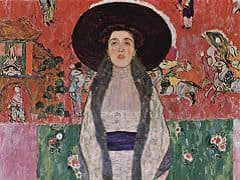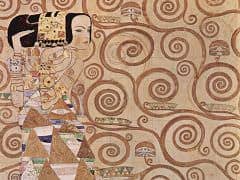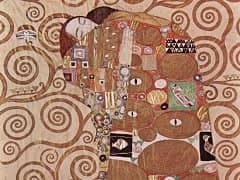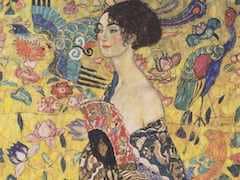Pallas Athene, 1898 by Gustav Klimt
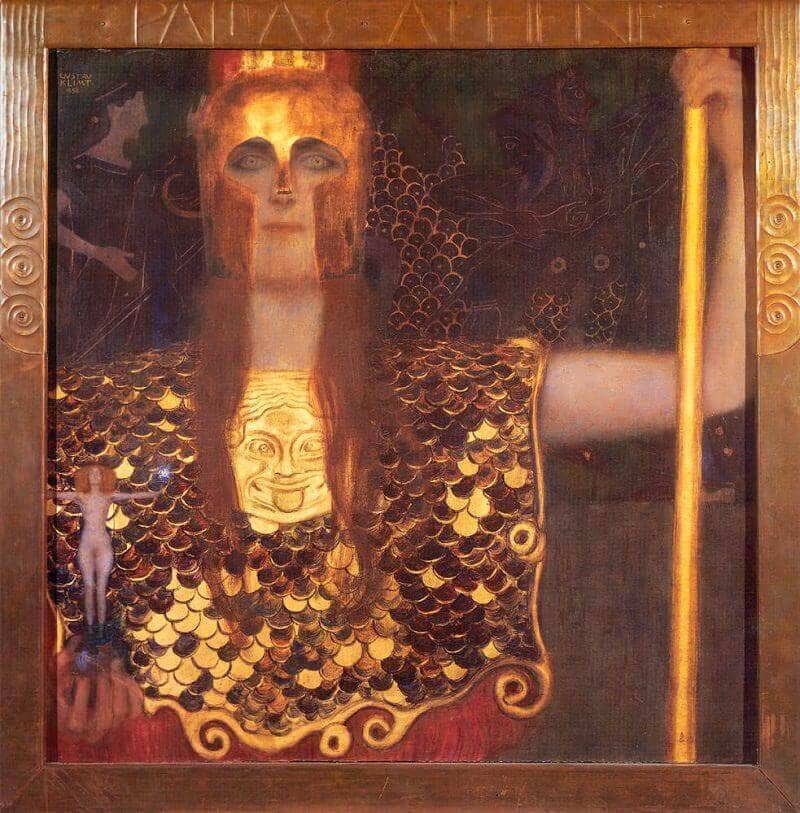
The Athena of myth is a paradox, an external contradiction but internally consistent: a goddess with what some women, Pomeroy and Cantarella, for example, consider masculine powers. The Athena of a state religion or state cult is another persona and not the subject of this study. In mythology Athena poses a curious androgynous power. Is she externally female but internally male or is it that her myth persona is ambiguous? To us, wisdom and war may seem strange mindmates of this patron goddess, impossible alloys. Here it may be merely a cross-cultural and diachronic dilemma, but Athena's compound persona is nonetheless fascinating.
Gustav Klimt's use of Classical myth iconography is directly derivative of antiquity in his many images of Athena. Perhaps the outstanding image of this goddess since Classical antiquity, however, is his Pallas Athene of 1898. She is a very different persona from his famous femmes fatales whose sexuality is overwhelming, for example his Judith and the Head of Holofernes (1901) and Danae (1907-8). Here it is Athena's divinity which Klimt finds more interesting, rather than her sexuality, which is not surprising given the gender ambiguities she demonstrated in Greek antiquity. Perhaps Klimt implies that power is a catalyst to sexual instincts, as history has long suggested that power is one of the most important sexual stimuli in human behavior and that the desire for power is strongly connected to sexual desire. In any case, this somewhat asexual Greek goddess becomes Klimt's most powerful female in his art.



